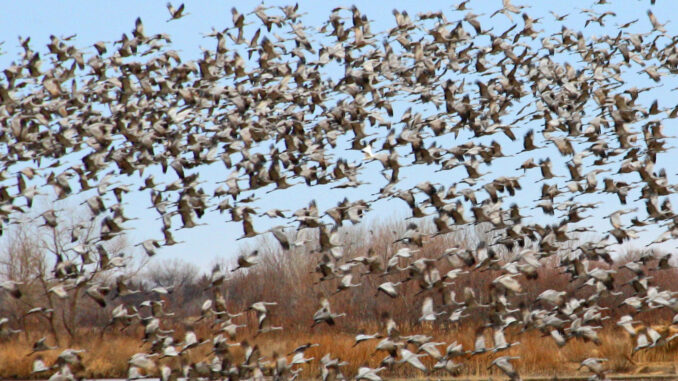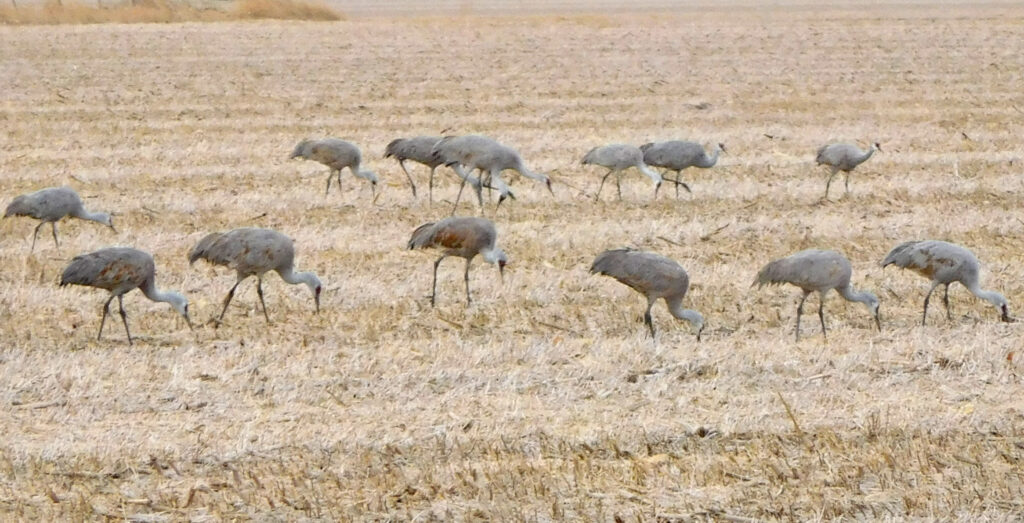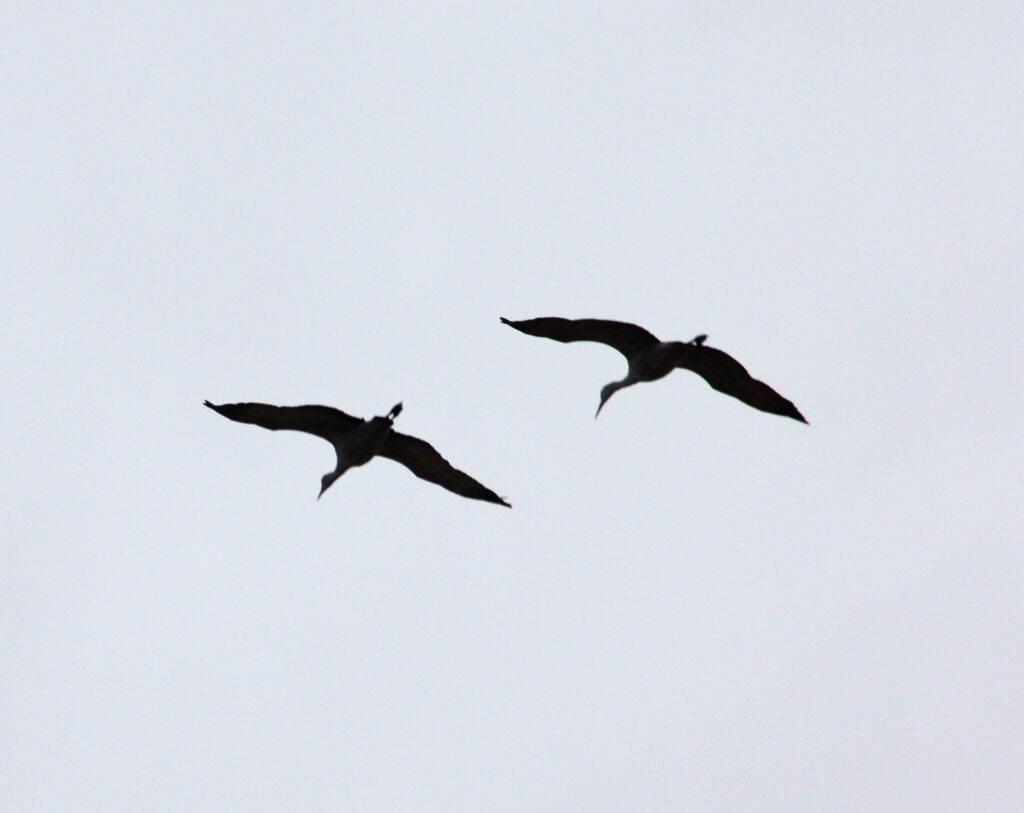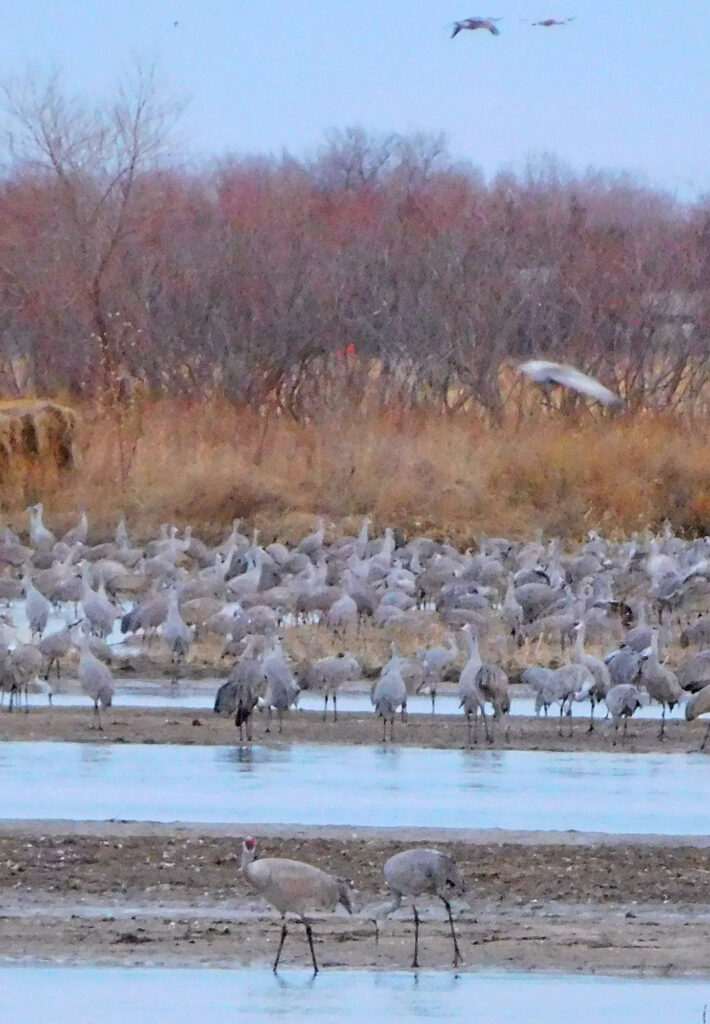
Tim Van Schmidt | New SCENE
Just recently, I became a “craniac”.
Actually, a “certified craniac”, according to a t-shirt I bought at the Rowe Sanctuary after experiencing an awesome natural phenomenon in Kearney, Nebraska. That is, the annual migration of the sandhill cranes through that area — not in scattered numbers, but in the hundreds of thousands.
Owned by the National Audubon Society since 1974, the Rowe Sanctuary boasts 2.5 miles of river channel and wet meadows along the Platter River in Kearney. It is also the home of The Iain Nicolson Audubon Center at Rowe, a facility that anchors the sanctuary, provides educational opportunities and maintains a gift shop.

Rowe Sanctuary, 1,447 acres in all, provides public hiking trails and the Center also manages a series of viewing blinds for visitors to experience the sandhill crane migration up close.
I got to see plenty of action at one such blind in an early — very early — morning tour.
Our group walked the quarter-mile from the Center to the blind in the dark, using the soft glow of red flashlights to help guide our feet.
In the darkness, as we waited quietly in the blind — or in the warming room — you couldn’t see the cranes, but you could hear them. I sat on a bench, closed my eyes, and just listened to the cacophony of a kind of rough trumpeting sound. If you listened hard, you could hear there were different voices at play — by the thousands.

But as the morning began to lighten, the cranes not only became visible but also started heading out, often in large groups, to area fields for a day of foraging for food. This was the most stirring thing about the experience — when many of them lifted off together.
Now, this doesn’t happen all at once — it’s a process and takes a couple of hours — and it doesn’t just happen at the Rowe Sanctuary. The cranes roost along the river at night, eat in the fields during the day, and fill the skies in the mornings and evenings throughout the entire region.
But the Rowe Sanctuary, it turns out, is not just a protected harbor for the cranes, but also for the “craniacs” — those people who love the cranes and birds in general.
Two volunteer craniacs were the leaders for our group in the blind and were more than willing to answer questions. Inside the Center afterward there were more craniac volunteers who seemed eager to share their stories and knowledge of the birds.

But it doesn’t just stop there. Craniacs were parked along the gravel roads we traveled leaving Rowe, watching as platoons of the cranes pecked and picked their way across area farm fields.
We saw other craniacs — people we recognized from our tour — out at area restaurants. On our way back to Fort Collins, we met some more craniacs at a rest area in Sterling and they were happy to relate their experiences as well.
And don’t look now, but I think I am a craniac too.
What’s the big deal? Well, maybe you have to experience it for yourself to really know, but getting so close to so many wild things can be exhilarating.
These cranes aren’t small — they can weigh 6-14 pounds and can have a wingspan of more than 6 feet. And it’s good they don’t seem to mind being peered at by craniacs from around the country — when hundreds of them are lifting off the ground and quickly shifting into full flight, they can have a formidable presence. Honestly, I wouldn’t want to be in the middle of them when they are geared up.
But check them out from a blind along the river? Sure. Go back next year? I’m in. I’d like to do the tour designed specifically for photographers.
This wasn’t a big trip — a little over 5 hours from Fort Collins — but it went somewhere I had never been before. The cranes have been there before, though, and they will be there again next year. So will the craniacs.
Tim Van Schmidt is a writer and photographer based in Fort Collins. See his sandhill crane slideshow, “Incredible Cranes: Nomads on the Move 2022”, featuring an original soundtrack by NOCO recording group OoB, on his channel on YouTube at “Time Capsules by Tim Van Schmidt”.
Support Northern Colorado Journalism
Show your support for North Forty News by helping us produce more content. It's a kind and simple gesture that will help us continue to bring more content to you.
BONUS - Donors get a link in their receipt to sign up for our once-per-week instant text messaging alert. Get your e-copy of North Forty News the moment it is released!
Click to Donate
